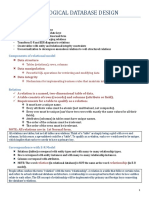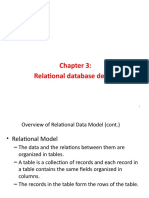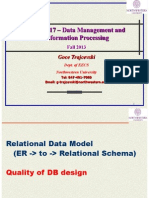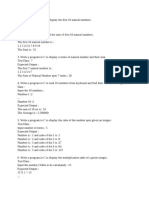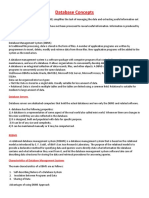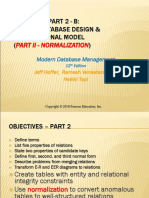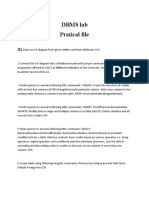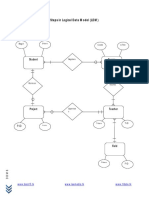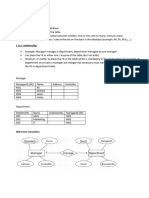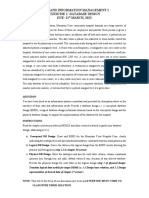0% found this document useful (0 votes)
148 views48 pagesRelational Model and Data Normalization
The document discusses how to transform an entity-relationship (E-R) model diagram into relational database tables. It describes how regular entities, weak entities, binary relationships, associative entities, and unary/ternary relationships in an E-R diagram map to relations and attributes in a relational database. Key elements like primary keys, foreign keys, and composite keys are preserved in the mapping from E-R diagrams to normalized relational tables.
Uploaded by
Rana ZuhaibCopyright
© © All Rights Reserved
We take content rights seriously. If you suspect this is your content, claim it here.
Available Formats
Download as PPT, PDF, TXT or read online on Scribd
0% found this document useful (0 votes)
148 views48 pagesRelational Model and Data Normalization
The document discusses how to transform an entity-relationship (E-R) model diagram into relational database tables. It describes how regular entities, weak entities, binary relationships, associative entities, and unary/ternary relationships in an E-R diagram map to relations and attributes in a relational database. Key elements like primary keys, foreign keys, and composite keys are preserved in the mapping from E-R diagrams to normalized relational tables.
Uploaded by
Rana ZuhaibCopyright
© © All Rights Reserved
We take content rights seriously. If you suspect this is your content, claim it here.
Available Formats
Download as PPT, PDF, TXT or read online on Scribd
/ 48






















